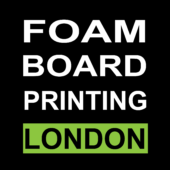How to Paint Foam Board Without It Warping: Tips and Techniques
Foam board, also known as foam core or foam sheet, is a versatile material commonly used in arts, crafts, and DIY projects due to its lightweight and easy-to-cut properties. However, painting foam board can be challenging, as it is prone to warping and distortion when exposed to moisture or certain types of paint. In this article, we’ll explore various tips and techniques for painting foam board without causing it to warp, ensuring a successful and professional-looking finish.
1. Choose the Right Paint:
Selecting the appropriate paint is crucial for preventing warping when painting foam board. Water-based paints, such as acrylics or latex, are recommended, as they have a lower risk of causing moisture absorption and warping compared to oil-based paints. Additionally, choose paints labeled as “low VOC” (volatile organic compounds) to minimize the risk of chemical reactions with the foam board.
2. Apply Thin Layers:
When painting foam board, it’s essential to apply thin, even layers of paint to minimize moisture absorption and reduce the risk of warping. Avoid applying thick coats of paint, as this can saturate the foam board and lead to deformation. Instead, apply multiple thin layers of paint, allowing each layer to dry completely before applying the next one.
3. Use a Primer:
Applying a primer designed specifically for foam board can help seal the surface and create a barrier between the paint and the foam material. Choose a primer that is compatible with both foam board and the type of paint you’ll be using. Apply the primer evenly using a brush or roller, and allow it to dry thoroughly before painting.
4. Seal the Edges:
Foam board edges are particularly susceptible to moisture absorption, which can cause warping. To prevent this, seal the edges of the foam board before painting using a sealant or clear acrylic medium. Apply the sealant evenly along the edges, ensuring complete coverage to create a protective barrier against moisture.
5. Use Light Pressure:
When painting foam board, use light pressure and gentle brush strokes to avoid pressing the paint into the surface of the foam material. Excessive pressure can cause the foam board to compress and deform, leading to warping. Instead, apply the paint using a soft-bristled brush or foam roller, using smooth, even motions.
6. Allow Sufficient Drying Time:
Proper drying time is essential to prevent warping when painting foam board. Allow each layer of paint, primer, and sealant to dry completely according to the manufacturer’s instructions before applying the next layer or handling the foam board. Rushing the drying process can lead to uneven drying and increased risk of warping.
Conclusion
Painting foam board can be a rewarding and creative endeavor, but it’s essential to take precautions to prevent warping and distortion of the material. By choosing the right paint, applying thin layers, using a primer and sealant, using light pressure, and allowing sufficient drying time, you can achieve professional-looking results without compromising the integrity of the foam board. With these tips and techniques, you can confidently paint foam board for a wide range of projects, from artwork and displays to model making and signage, while ensuring a smooth and warp-free finish.
